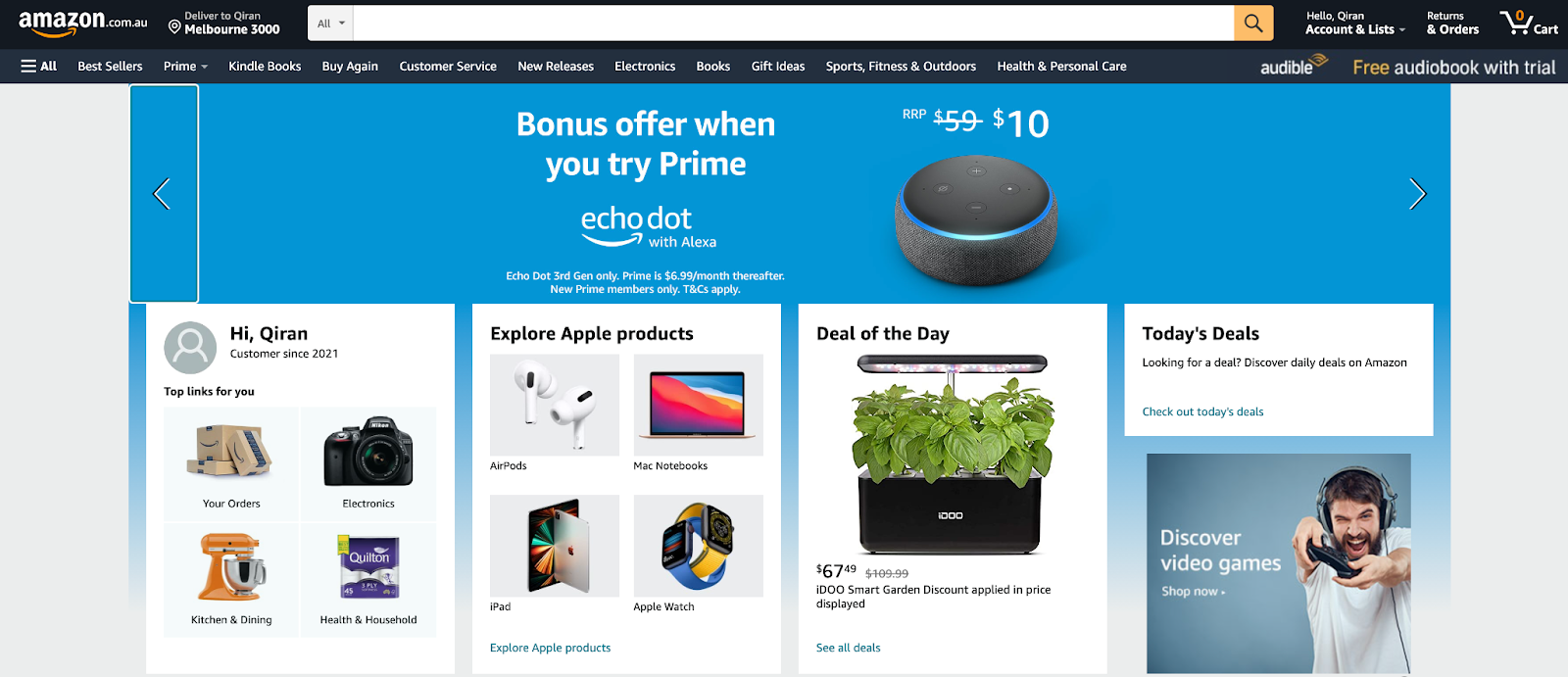Welcome back to the intricate art of tailoring series! In this series, we’re unraveling the threads that make personalization in the digital space so tricky to master, in an attempt to learn how you can craft bespoke content for your audience - successfully.
But before we begin, did you know...
- 71% of customers feel frustrated when their experience is impersonal?
- 63% of customers will stop buying from brands that use poor personalization strategies?
A personalized experience is integral to the entire customer experience, by providing meaningful information for your clients at the right place, at the right time.
Today’s article is all about the future trends of personalization and what you need to look out for to stay ahead. It’s time to throw out just using {insert_name} at the beginning of your emails and calling it ‘personalization’, because that’s so last season. These are the hot trends to keep your eyes peeled for.
1 Dynamic content
Content creation has evolved so much so it can now shapeshift to be more appealing for viewers by displaying completely different messages.
Sorry, what?
You heard me! Dynamic content is the components in a webpage or email that change depending on predetermined parameters and customers’ data. In other words, what you know about your audience can alter the content they see.
Let’s take Amazon for example: anytime you hop onto their website, the recommendations are examples of dynamic content. They change from individual to individual because they’re optimized to help connect customers to relevant information (which in my case seems to be about Apple products and a Smart Garden).

And how can you ‘access’ dynamic content? Well, dynamic content is a feature embedded into many different platforms, however, the extent of control that you have over the content will vary between platforms. For example, Google Ads offers the ability to create dynamic ad content for paid ad campaigns. Other popular platforms like Salesforce and Marketo also offer the ability to insert dynamic content into email templates, allowing more effective email nurture sequences.
To get you started, I’d recommend taking a read of this guide by Bloomreach. It’s all about effective dynamic content management and the differences between B2B and B2C.
2 Cross-department collaboration
As your organization grows, the demand for personalized experiences grows with it, requiring internal departments to be more agile than ever.
That’s why cross-department collaboration is a must.
Siloing, idea friction, and bureaucracies all ruin your chances of creating effective tailor-made content for your audiences. In fact, Adobe states only “38% of IT professionals surveyed believe their organizations’ content systems are well-connected to their experience delivery systems”. Bridging the gap between departments and teams is the only way forward to keep up with content demands and produce content that converts, excites and engages the audience.
3 Protecting customer privacy
All personalized and dynamic content is possible because of one thing - customer data. Our browsers, devices, webpages, and applications are constantly collecting our information to provide us with the best experience possible. Yet, the question remains - what are the ethical implications of this and how can we protect people’s sensitive information?
With “90% of consumers concerned about their online privacy”, according to McKinsey, giving the power back to consumers is more important than ever. In 2018 the European Union enacted the General Data Protection Regulation, enforcing greater transparency of user’s privacy online. As a result, you’ll often see web pages asking you to accept their privacy and cookie settings (or not).
More recently, Apple has given the option for users to choose not to share their phone data with specific apps in iOS 14, meaning applications such as Facebook and Instagram are no longer able to collect users’ data to the same extent. Those in the digital marketing industry have heavily felt the effects as ad campaigns are no longer as effective as they once were.
The future of customer data still has a lot of patchwork. How do we ensure the ultimate protection and freedom of consumers’ privacy? And how can we do this without taking away the value generated from personalized and dynamic ad content (affecting both businesses and the consumer)?
If you’re interested in some statistics, SmarterHQ has prepared a useful report on Privacy & Personalization that I’d recommend taking a look at.
4 Connecting online with offline
Our last digital personalization trend is all about connecting online messaging to offline experiences.
Yes, there has been a recent push towards the eCommerce space, but physical stores aren’t going away. People love purchasing items in real life and so connecting offline interactions to the online experience provides the perfect opportunity to elevate your customers’ experience.
So what exactly does connecting online to offline experiences look like? Take a look at your local gym, you’ll often find personal trainers taking progress photos of their clients on social media. Or perhaps you’ve received a thank you email, digital receipt or a survey from a sales assistant after making a retail purchase. The idea behind this is to ensure customers receive a personalized end-to-end experience. In the aforementioned report by SmarertHQ, 72% of consumers only engage with personalized brand messages. With this in mind, connecting online to offline experience is a great way of maintaining your customers' engagement with your brand and keeping them in the customer journey loop.
The future is: Large-scale individualization
These are just some of the many trends trying to make the world a more integrated place. It’s all about reaching more people, but at a more personal level.
If you’re not doing some of these trends we talked about today, that okay! I’d highly recommend taking a look at your processes and evaluating to what extent your customers feel like individuals and if there’s room for improvement.
And if you liked this article, why not check out the other article in the series:
If you’re curious to know more about us, we’d love to get to know you. Or, if you have any other thoughts or questions, feel free to continue the conversation at @joinTiny.
